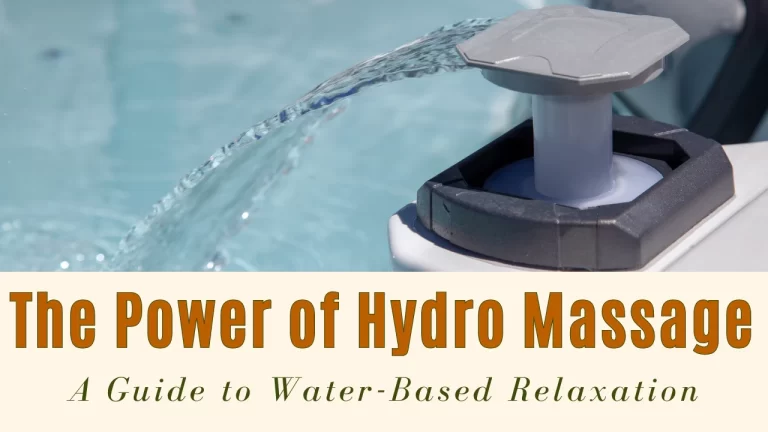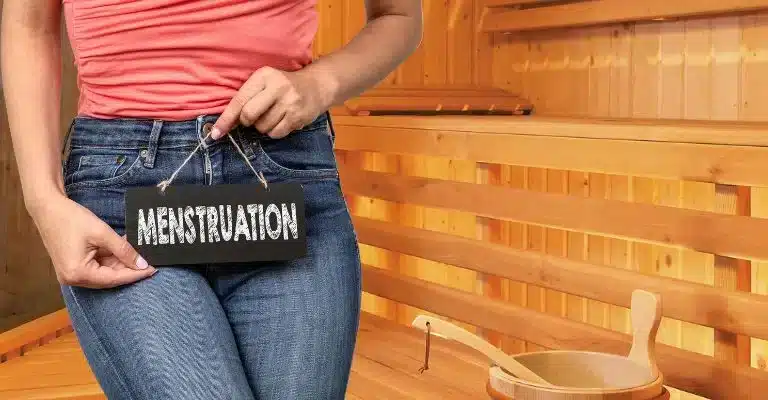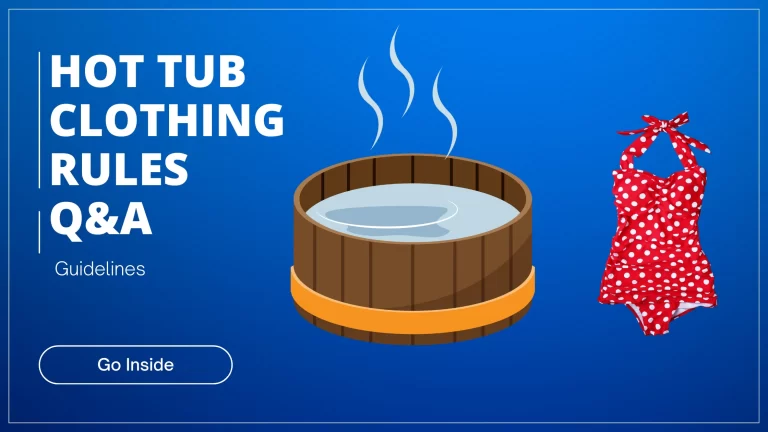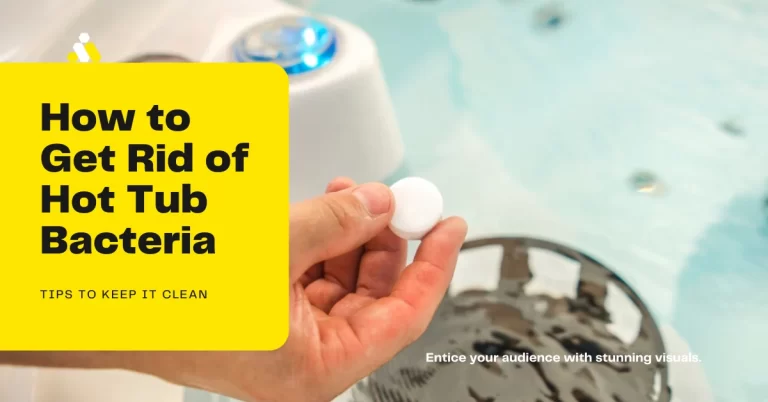What to Wear for a Lomi Lomi Massage (Simple Guide)
If you’re getting ready for a Lomi Lomi massage and stressing about what to wear, you’re not the only one. Most people show up a little unsure about how much to undress, what’s normal, and what’s comfortable. The good news is the clothing part is way simpler than it feels.
This massage uses a lot of oil and long flowing strokes, so your outfit can really affect how relaxed you feel. Here’s a quick overview so you walk in confident, comfortable, and totally ready for the session.
Most people wear just their underwear during a Lomi Lomi massage because the therapist uses a lot of warm oil and needs access for long, sweeping movements. If you prefer more coverage, you can wear swimsuit bottoms, but avoid anything tight or thick because oil will make it feel uncomfortable.
You can also check out the benefits of knee massagers if you want extra relief at home.
- What is Lomi Lomi Massage?
- Lomi Lomi Clothing Comparison Chart
- Dressing for Your Lomi Lomi Massage
- What Do You Wear During a Lomi Lomi Massage?
- Do You Have to Undress?
- How Your Clothing Affects the Experience
- What Happens During a Session?
- How to Get Ready Before Your Massage
- What to Expect:
- Additional Tips for a Smooth Experience
- Comfort is Key
- FAQs
What is Lomi Lomi Massage?
Lomi Lomi is a traditional Hawaiian healing massage that blends long, wave-like strokes, rhythmic movement, breathwork, and intention-setting. It feels more like being wrapped in warm ocean water than a typical spa massage. Therapists use their hands, forearms, and elbows in continuous motions designed to relax your muscles and calm your mind.
Many sessions start with a short ritual like deep breathing, a quiet prayer, or simple grounding so you’re fully present. It’s not just about your body, it’s about your entire energy settling.
Differences Between Lomi Lomi and Other Massage Techniques
Lomi Lomi is more fluid and whole-body focused, so the therapist moves around the table and works in broad patterns instead of small isolated areas.
| Massage Type | Pressure Style | Clothing Needs | What Makes It Different |
|---|---|---|---|
| Swedish | Light to medium | Undress to comfort | Classic spa massage, no cultural elements |
| Deep Tissue | Firm pressure | Undress to comfort | Targets chronic tension, can feel intense |
| Lomi Lomi | Smooth, long, rhythmic | Typically underwear only | Uses flowing forearm strokes, spiritual roots, lots of oil |
The Hawaiian Roots of Lomi Lomi Massage
Today, Lomi Lomi is celebrated for its ability to provide not only physical relief but also spiritual renewal. The practice remains deeply connected to its cultural origins, offering an opportunity to engage with traditional Hawaiian values while receiving a deeply relaxing massage.
It has also a rich history tied to Hawaiian and Polynesian traditions. Historically, it was practiced by trained healers as part of spiritual ceremonies and was considered a sacred art. This tradition faced suppression by American missionaries but experienced a revival in the 1950s, led by native Hawaiians who sought to reclaim their cultural practices.
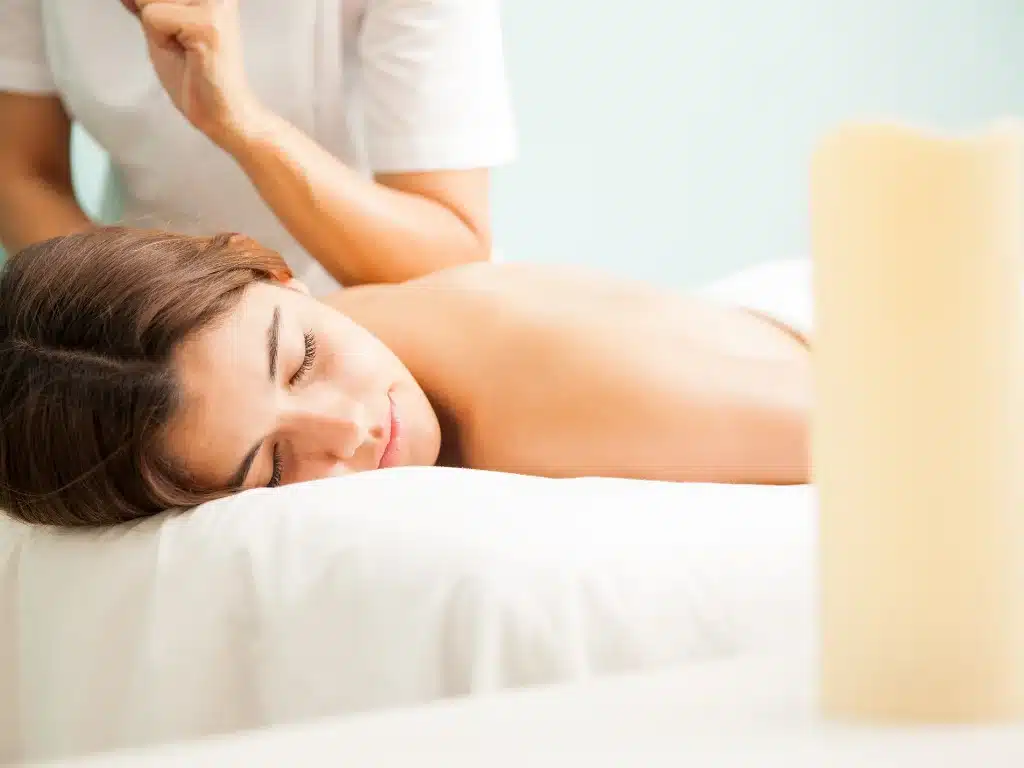
If you enjoy oils during your massage, here’s how to make your own massage oil.
Lomi Lomi Clothing Comparison Chart
If you want the classic, smooth Lomi Lomi experience, underwear only works best. If you feel more comfortable with extra coverage, thin swimsuit bottoms are the next best option.
| Clothing Option | Coverage Level | Comfort With Oil | Best For | Things to Know |
|---|---|---|---|---|
| Underwear Only | Moderate | Excellent | Most clients | Easiest for long, flowing strokes. Doesn’t trap oil. Gives the therapist full access while still keeping you draped. |
| Swimsuit Bottoms | Medium-High | Good if lightweight | First-timers who want more coverage | Choose thin, stretchy fabric. Thick swimsuits get sticky with oil and don’t move well. |
| Sports Bra + Underwear | High | Fair | Clients needing extra coverage | Limits upper-back and shoulder work. Some therapists will ask to adjust straps. |
| Loose Shorts | High | Fair | People uncomfortable with underwear | Fabric may bunch up, block strokes, and soak oil. Not ideal for traditional technique. |
| Full Nude with Draping | Minimal | Excellent | Traditional Hawaiian practice with skilled therapists | You’re fully covered with sheets except the area being worked on. Common in lineage-based Lomi Lomi. |
| Leggings / Yoga Pants | High | Poor | Not recommended | Oil makes them slippery and hard to work around. Restricts the signature long forearm strokes. |
| Jeans / Thick Fabric | Very High | Terrible | Absolutely not recommended | Oil won’t work with heavy material. You’ll feel stiff and uncomfortable. |
Dressing for Your Lomi Lomi Massage
Dressing appropriately and understanding the expectations for undressing can enhance the experience. By preparing with comfortable clothing and discussing any concerns with your therapist, you’ll be set for a relaxing and enjoyable session.
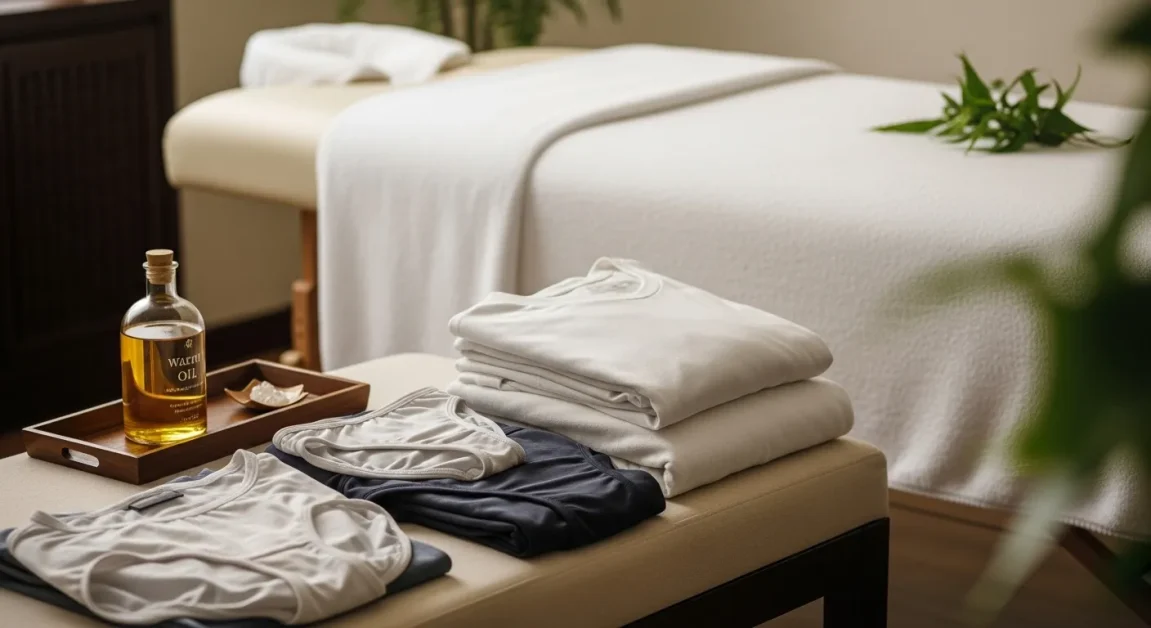
Lomi Lomi Massage What To Wear?
Think simple, comfortable, and easy to remove.
Before the massage
Wear something loose and easy, like:
- a comfy t-shirt
- sweatpants
- a sundress
- soft shorts
You’ll be undressing once you’re in the room, so nothing complicated.
For more bodywork styles, here’s a quick look at the benefits of Asian massage.
What Do You Wear During a Lomi Lomi Massage?
Here’s the part most people worry about.
Most common option
Underwear only.
This is the standard in most spas because Lomi Lomi uses a lot of warm oil and long strokes across big areas of the body.
Other normal options
- Swimsuit bottoms
Great if you want more coverage, but choose thin fabric. - Sports bra (for women)
Only if you feel better wearing one, but know the therapist might not be able to work your back as easily. - Going fully nude
Many traditional practitioners prefer this with professional draping. The sheet always covers you except the area being worked on.
What NOT to wear
Avoid these because they get uncomfortable fast:
- tight leggings
- thick shorts
- shapewear
- anything that doesn’t move with oil
- jeans (yes, people try this)
Oil will soak into thick fabric and feel sticky.
Do You Have to Undress?
Short answer, yes, to some degree, but always to your comfort level.
Here’s how it works:
- You undress privately.
- You get under the sheet.
- The therapist drapes you professionally.
- Only the area being massaged is uncovered.
If you want more coverage, just say so. They hear this every day. The therapist will adjust their technique so you still get a good session.
Additional Tips:
- Clothing Options: Opt for loose-fitting and comfortable fabrics like cotton, bamboo, linen, or silk. These materials enhance relaxation and allow for easy movement.
- Footwear: You won’t need shoes for your session. Being barefoot is preferable as it helps you fully relax and allows the therapist to work more effectively.
You might also like learning about Nuad Thai traditional massage.
How Your Clothing Affects the Experience
Your outfit changes two things:
1. How easily the therapist can work
Lomi Lomi uses long strokes that travel across the full length of your limbs and torso. More fabric equals more friction and more interruptions.
2. How relaxed you feel
If you’re worried about your clothes shifting or bunching, you won’t sink into the treatment.
Industry surveys show about 80 percent of massage clients choose underwear only for any oil-based massage. It’s simply the most comfortable option.
Cultural Notes (Important for Respect)
Lomi Lomi comes from Hawaiian healing traditions. The intent behind the session matters just as much as the physical technique.
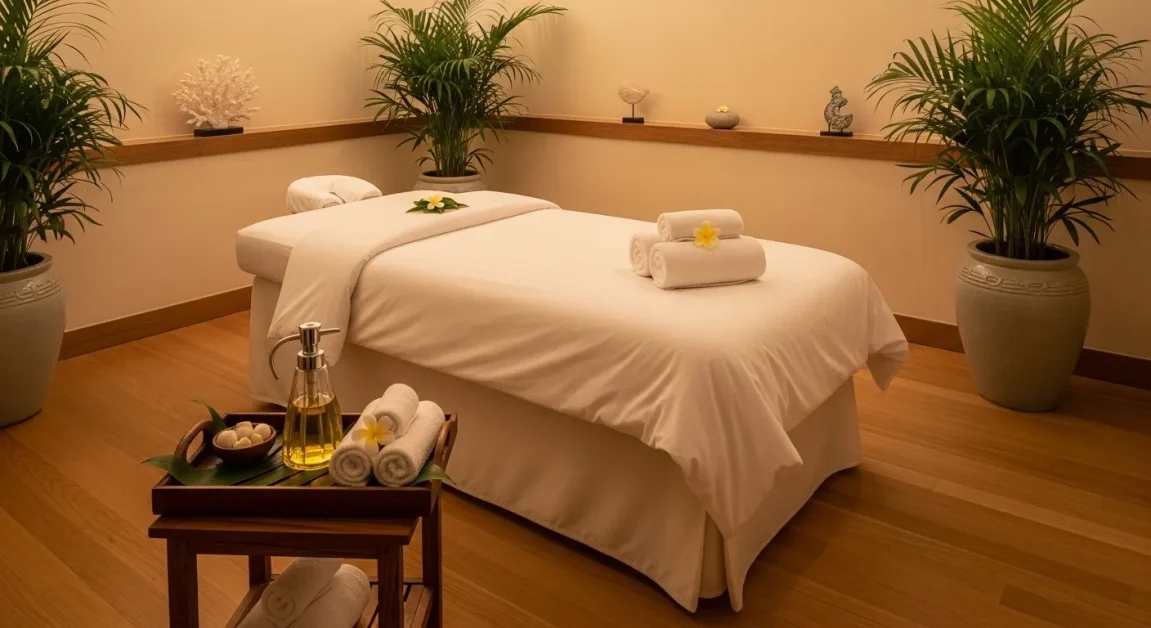
A few things to know:
- Practitioners often work with warm oil to mimic the movement of ocean waves.
- Many incorporate breathwork or gentle chants.
- The goal is physical and emotional release, not just muscle work.
- Modesty is always respected, no matter the tradition.
What Happens During a Session?
Here’s what a typical 60–90 minute Lomi Lomi treatment looks like:
1. A short grounding moment
Breathing, quiet intention-setting, or a brief blessing.
2. Long, flowing movements
Forearms, hands, and elbows gliding up and down the body in rhythmic waves.
3. Smooth transitions
You may change positions slowly, with draping kept secure the whole time.
4. Plenty of warm oil
Your skin will feel soft and warm afterward, and your hair might get a little oily too.
Average prices
Most places charge 90 to 150 dollars in the US depending on session length and location.
How to Get Ready Before Your Massage
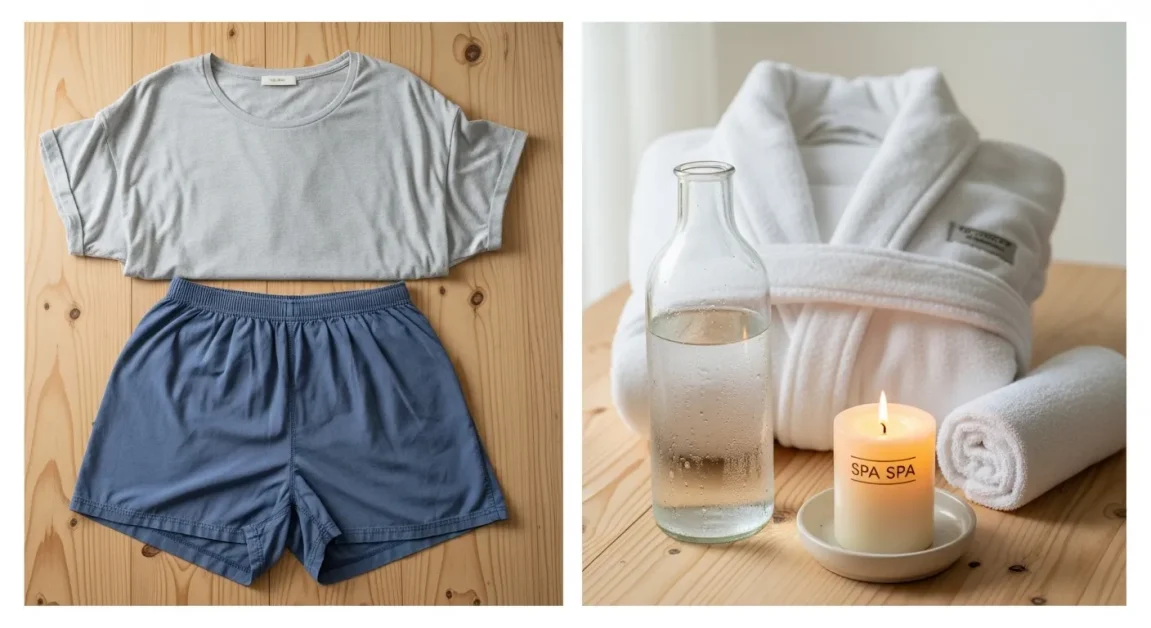
A few simple things help the session feel amazing:
- Drink water beforehand.
- Avoid heavy meals.
- Arrive 10 minutes early to settle in.
- Tell your therapist about injuries, areas to avoid, or modesty preferences.
What to Bring
You don’t need much:
- loose clothing for after
- hair tie if you want it
- a water bottle
- contactless payment if the spa uses it
Most spas provide towels, sheets, robes, and everything else.
What to Do After Your Massage
Your body will feel loose and warm, so take it easy.
- Drink water to help flush out metabolic waste
- Avoid heavy workouts and hot baths for 24 hours
- Eat something nourishing
- Let the oils absorb before showering
Many people notice better flexibility and calmer breathing afterward.
Keep It Simple
You don’t need a special outfit for Lomi Lomi. Just wear something easy to remove, choose underwear or swimsuit bottoms for the session, and tell your therapist what makes you comfortable. Once you settle in and relax, the rest of the experience feels incredibly soothing.
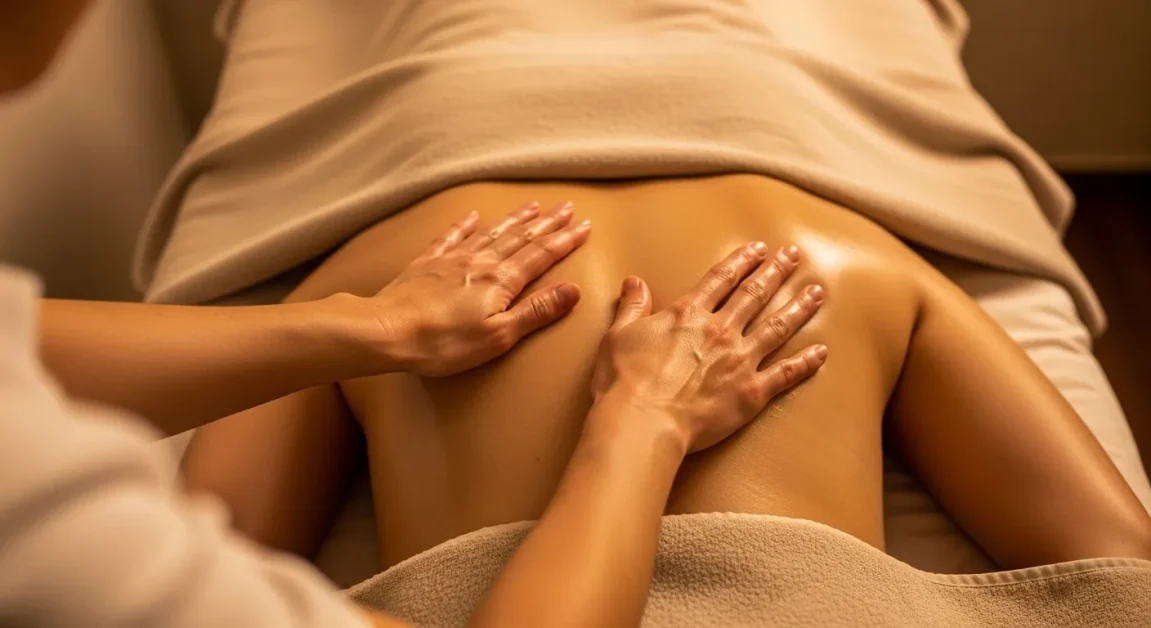
If you’re interested in the cultural side of healing practices, read about the spiritual side of Thai massage.
What to Expect:
Lomi Lomi is designed to provide a deeply relaxing experience while also honoring its cultural roots. It combines physical relaxation with a touch of spiritual practice, offering a unique and rejuvenating treatment.
What Happens During a Lomi Lomi Massage
This massage is more than just a physical treatment; it’s a holistic experience that engages both body and mind. Here’s what you can expect:
- Initial Ceremony: The session often starts with a brief ritual, which might include breathing exercises, gentle music, or even chanting. This prepares you mentally and spiritually for the massage.
- Rhythmic Movements: The therapist uses long, flowing strokes with their hands, forearms, and elbows. These movements are designed to create a rhythmic, almost dance-like experience that helps relax the body and mind.
- Focus on Comfort: Unlike some other massage styles, Lomi Lomi prioritizes your comfort throughout the session. The pressure applied is always within a range that feels good, aiming to enhance relaxation rather than cause discomfort.
Typical Duration and Flow of a Lomi Lomi Session
- Duration: Most Lomi Lomi sessions last between 60 to 90 minutes. This allows ample time to cover the entire body and incorporate the flowing strokes that are characteristic of the technique.
- Session Flow: The massage typically involves switching between different positions, such as lying on your back and stomach. This helps the therapist access various muscle groups and pressure points effectively. The session might also include repetitive strokes over different areas to deepen the sense of relaxation.
The Use of Oils and Other Techniques
- Oils: A significant feature of Lomi massage is the use of a generous amount of massage oil. This reduces friction and allows the therapist’s hands to glide smoothly over your skin, enhancing the overall experience. Be prepared for your skin to be quite shiny and your hair possibly oily after the treatment.
- Techniques: Lomi Lomi employs a range of techniques, including kneading, sweeping, and rhythmic movements. The use of oil is essential here as it facilitates the long, flowing strokes that define this massage style. The massage may also involve more focused work on areas like the abdomen, which is less common in other massage practices.
Common Misconceptions and Tips for First-Timers
- Misconception: “I need to be in perfect shape to get a massage.”
- Tip: It is suitable for all body types and fitness levels. The focus is on relaxation and healing, not physical fitness.
- Misconception: “All massages are the same.”
- Tip: Lomi Lomi is unique with its specific techniques and cultural background. Understanding this can help you appreciate the experience more fully.
- Misconception: “I should be silent during the massage.”
- Tip: It’s okay to communicate with your therapist during the session. If you’re uncomfortable or need adjustments, speak up. Your comfort is the priority.
- Misconception: “Massage will hurt if it’s effective.”
- Tip: While some pressure is normal, a good massage should not be painful. If you experience discomfort, let your therapist know so they can adjust their techniques.
For more about ELECTRIC MASSAGER WITH A PACEMAKER
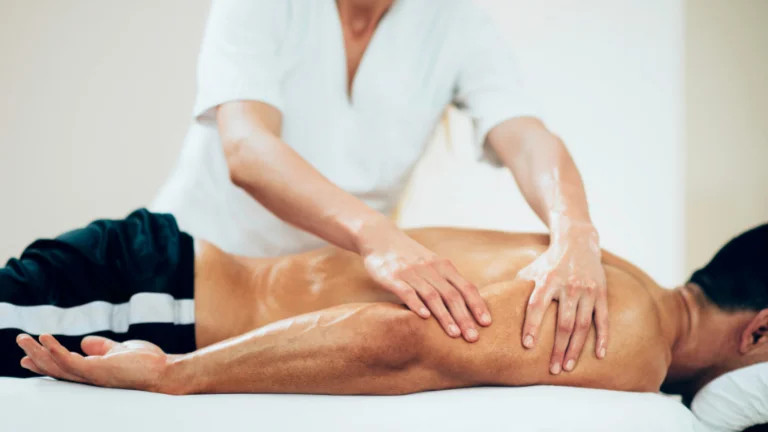
Additional Tips for a Smooth Experience
By taking these steps, you can ensure a smooth and beneficial experience, both before and after your appointment.
How to Find a Lomi Lomi Massage Near You
- Choosing the Right Practitioner:
- Research and Reviews: Look for practitioners with good reviews and a solid reputation. Check their experience and qualifications in this massage.
- Certifications: Ensure that the practitioner is certified and trained in Lomi Lomi massage. This ensures that they follow proper techniques and standards.
- Consultation: Consider scheduling a brief consultation before your appointment to discuss your needs and comfort level with the therapist.
- Ensuring a Professional and Comfortable Setting:
- Cleanliness: Choose a spa or clinic that maintains a high standard of cleanliness. A professional setting should be clean and well-organized.
- Ambiance: Look for a place with a calming ambiance that contributes to relaxation. A peaceful environment with soothing music and comfortable amenities enhances the overall experience.
- Comfort: Make sure that the space is private and that you feel comfortable with the practitioner. Your comfort is key to a relaxing massage experience.
Comfort is Key
Remember the importance of breathability and lightweight fabrics when selecting an outfit for your massage session. This will help keep you cool during your treatment while also allowing freedom of movement so that your therapist can easily access all parts of your body.
As a final tip: avoid wearing anything too tight or restrictive, as this could impede the effectiveness of the massage overall.
To access additional articles related to ‘Hot Tub Patio‘ or to read more posts related to this topic, please visit the Massage category.








